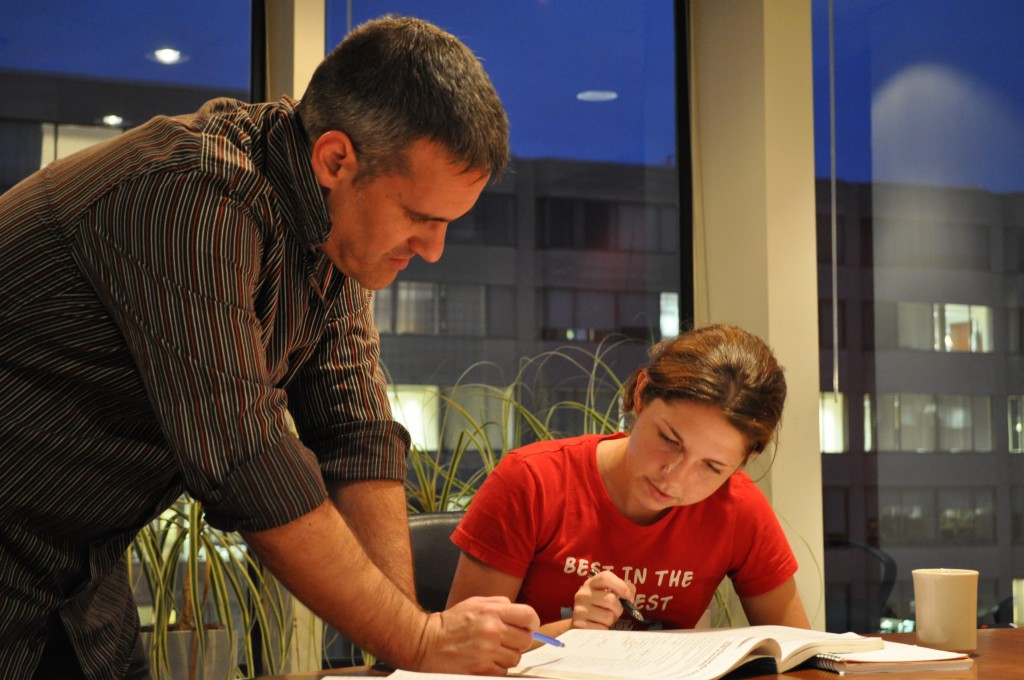Why Small Classes Get Big Results
We have a maximum class size of seven students because we believe that smaller classes are essential for learning Spanish effectively.

Experienced teachers and language learners all agree, if you want to learn Spanish, then you are going to have to speak Spanish – and lots of it. This is something that is much easier to do in a small class rather than a large one. Instead of waiting for twenty or so other students to finish speaking before you get your turn, being one of five or six allows you to dive into the conversation immediately and begin learning.
When it comes to learning a new language, there is a process that each learner must follow. The first step is listening to the new material. The next step is repeating the material and practising the new sounds and words. After that, the learner should be trying to answer questions on the new material. The final step is asking questions on the topic in the target language. Though the method may change slightly in practice, the stages stay more or less the same. Each of these steps is easier to complete if the class is smaller, rather than larger.
Why Small Classes are ‘Better’ than Lectures for Learning Spanish
Learning Spanish in a small class is better than a big group because smaller classes offer more opportunities for speaking engagement. Studies show that the more people that are in a room, the less likely students are to display deeper cognitive function. In classes of twenty or so, when students speak it is simply to recall facts, stage two of the above process. In classes of five or six, students are much more willing to explore and analyse the material, reaching stage four instead.
It’s also the case that when you have more than seven students, opportunities for student speaking and engagement tend to drop dramatically. One reason for this is because a larger class offers less chance for a teacher and student to build a trusting relationship with one another. Speaking in another language can be daunting and some students find that having a good relationship with their teacher and with their classmates is essential for building the confidence necessary to open their mouths in the first place. In a smaller sized class, students can feel comfortable enough to be at the centre of the classroom (which is where they should be)!
When classes get bigger than seven, you often find that you no longer have a lesson, but instead you have a lecture – usually a boring lecture. Is there anything more dull than a Spanish lecture where students aren’t given a chance to practise or ask questions? We’re not sure, but we do know something at least as boring as a lecture, which is classes that only follow a textbook, with the teacher saying “now go to page 44…” At Spanish Tutor DC, we make sure that, above all else, our lessons are engaging and student focused, rather than teacher or book focused.
One-on-One Spanish Classes in DC
Are one-on-one Spanish classes ‘better’ than small group classes? Generally speaking, yes. This is not to say that one-on-one Spanish classes are the best solution for everyone. Some people like having classmates who they can work with to reach their language learning goals and when classes are more enjoyable they are usually more efficient too! After many years of teaching experience, I have seen firsthand how important it is that each student finds the right class for their learning needs.
Whether you are interested in attending seminars (free for our students), joining a small class or even looking for one-on-one Spanish tuition, we have a range of options to suit all abilities and learning styles in the DC area.

